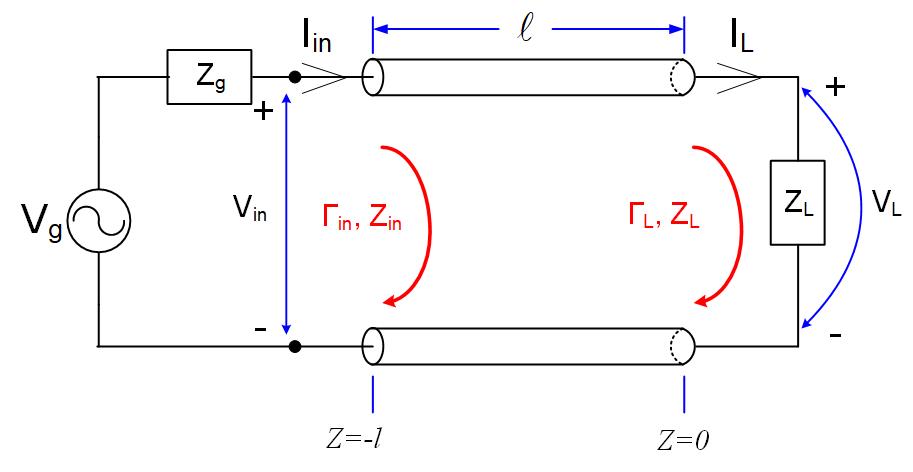A transmitter operated at 20MHz, Vg=100V with internal impedance is connected to an antenna load through l=6.33m of the line. The line is a lossless , . The antenna impedance at 20MHz measures . Set the beginning of the z-axis at the load, as shown in Figure fig:TRLine.
- (a)
- What is the electrical length of the line?
- (b)
- What is the input impedance of the line ?
- (c)
- What is the forward going voltage at the load ?
- (d)
- Find the expression for forward voltage anywhere on the line.
- (e)
- Find the expression for reflected voltage anywhere on the line.
- (f)
- Find the total voltage anywhere on the line.
- (g)
- Find the expression for forward current anywhere on the line.
- (h)
- Find the expression for reflected current anywhere on the line.
- (i)
- Find the total current anywhere on the line.
- (j)
- Instead of the antenna, a load impedance is connected to this 50 Ohm line. How will that change the equations above?
The equations for the voltage and current anywhere (any z) on a transmission line are
We are given phase constant , and we have to find the other unknowns: phasor of voltage at the load , and the reflection coefficient .
Since we know the load impedance , and the transmission-line impedance , we can find the reflection coefficient using Equation eq:reflcoe1.
To find the input impedance of the line, we use the equation
We can use one of the following two equations to find the forward going voltage at the load:
Because the generator’s impedance is equal to the transmission line impedance, we will use the second equation. When we see that the denominator simplifies into and we can further simplify the fraction to get the final value of . Since , the forward going voltage at the load is .
The equations of the voltage and current anywhere on the line are therefore
Suppose we replace the antenna with another load of impedance . In that case, the reflection coefficient from the load will be zero, and the reflected voltages will disappear, so the voltage and current will be equal to the forward-going voltage on the transmission line.
